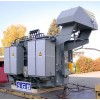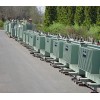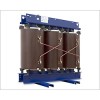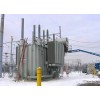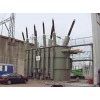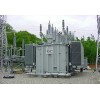In a conventional power plant, thermal or potential energy is converted to mechanical energy, which in turn must be converted to electrical energy. A steam, gas or water turbine is used to drive a rotating shaft, which in turn drives a generator, producing electricity at a relatively low voltage (typically in the range 15kV-24kV). This low voltage must be transformed to a higher voltage using a generator step-up transformer, otherwise the transmission conductors would be too large in cross-section to be practical, and the voltage drop (typically 10kV on typical transmission line) would mean that little or no power could actually be transmitted.
The generator transformer typically consists of a low voltage winding, a high voltage winding and an optional high voltage regulating winding, to allow some control of the output voltage level.
Many of the challenges with the design of generator step-up transformers relate to the extremely high currents in the LV windings, and the magnetic fields produced by the heavy current connections. Royal SMIT Transformers B.V. takes great care to calculate and control these magnetic fields in order to avoid hotspots in either the internal clamping structures or the transformer tank.
| 手机版 您好,欢迎来到变压器市场网!平台已覆盖越南、泰国、柬埔寨、缅甸等东南亚,印度、南非、俄罗斯、加拿大等海外区域。



|
公司基本资料信息
|
||||||||||||||||||||||||||||||
产品详细说明
更多..本企业其它产品




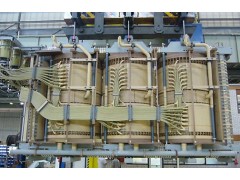
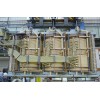


 通过变压器市场网平台信用论证中心认证
通过变压器市场网平台信用论证中心认证 
